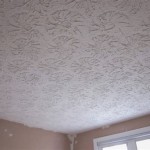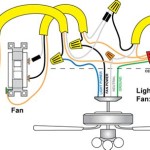Why Do Old Homes Have High Ceilings?
Many older homes, particularly those built before the mid-20th century, feature high ceilings, a characteristic often admired for its aesthetic appeal. However, the prevalence of high ceilings in these structures wasn't solely driven by stylistic preferences. Several practical factors contributed to this architectural trend, reflecting the technological limitations and societal norms of the time.
Temperature Regulation
Before the widespread adoption of air conditioning, high ceilings played a crucial role in maintaining comfortable indoor temperatures during warmer months. Heat rises, and the greater volume of air provided by a high ceiling allowed the warmer air to accumulate away from the occupied zone near the floor. This created a more temperate environment for inhabitants, particularly on upper floors.
Natural Light and Ventilation
Larger windows, often paired with high ceilings, maximized natural light penetration into homes. This was especially important before the advent of electric lighting when daylight hours significantly impacted daily routines. Taller windows also facilitated better cross-ventilation, allowing air to circulate more freely and improve air quality within the home. This was particularly important in mitigating the spread of airborne illnesses.
Fireplace Efficiency
Fireplaces served as the primary heating source in older homes. High ceilings allowed for larger fireplaces and chimneys, promoting more efficient combustion and smoke evacuation. The increased volume of air also helped distribute the heat generated by the fireplace more evenly throughout the space, minimizing cold spots and maximizing warmth.
Social Status and Grandeur
In certain periods, high ceilings were a symbol of wealth and status. Grand homes and public buildings often featured soaring ceilings to create an impression of grandeur and spaciousness. This architectural choice reflected the societal values of the time, where opulence and scale were associated with prosperity and importance. The use of ornate ceiling details further enhanced this effect.
Construction Techniques and Materials
Early construction techniques and the readily available materials influenced ceiling heights. Timber framing, a common method in older homes, often utilized long, vertical timbers that naturally lent themselves to higher ceilings. The relative abundance and affordability of lumber during certain eras also made higher ceilings a more economically feasible option compared to later periods, when material costs and construction practices shifted.
Accommodating Larger Families and Gatherings
Older homes frequently housed larger families or hosted larger gatherings than is common today. High ceilings contributed to a sense of spaciousness and reduced feelings of crowding, making these homes more comfortable for larger groups of people. The added air volume also helped to dissipate odors and improve overall air quality in densely occupied spaces.
Changing Trends and Technology
The adoption of central heating and air conditioning systems in the mid-20th century reduced the practical necessity for high ceilings. As these technologies became more affordable and widely available, ceiling heights gradually decreased in newer homes. This shift reflects the evolving priorities in residential construction, prioritizing efficiency and cost-effectiveness over the benefits offered by high ceilings in a pre-climate-controlled era.
Aesthetic Appeal and Preservation
While no longer a practical necessity, high ceilings continue to be a desirable feature in many homes. They create a sense of openness and grandeur, enhancing the aesthetic appeal of a space. In older homes, preserving original high ceilings is often a key consideration during renovations, recognizing their historical and architectural significance. The desire to maintain this characteristic contributes to the continued appreciation for high-ceilinged homes in the modern era.
Modern Adaptations
Even with the advent of modern climate control, architects and designers often incorporate high ceilings in contemporary homes to recapture the sense of spaciousness and elegance they provide. Understanding the historical reasons behind high ceilings allows for a deeper appreciation of their presence in older architecture and informs their continued use in modern design. This enduring appeal testifies to the lasting impact of this architectural element.

High Ceilings And How To Live With Them Bob Vila

Vaulted Ceilings 101 History Pros Cons And Inspirational Examples

High Ceilings And How To Live With Them Bob Vila

Classic Or Craze High Ceilings St Louis Homes Lifestyles

How To Take Advantage Of High Ceilings In Renovations Archdaily

High Ceilings And How To Live With Them Bob Vila

The Ultimate Guide To Vaulted Ceilings Pros Cons And Inspiration

How To Take Advantage Of High Ceilings In Renovations Archdaily

5 Ways You Can Raise Your Ceiling For More Space

Here S The Standard Ceiling Height For Every Type Of Bob Vila
Related Posts








